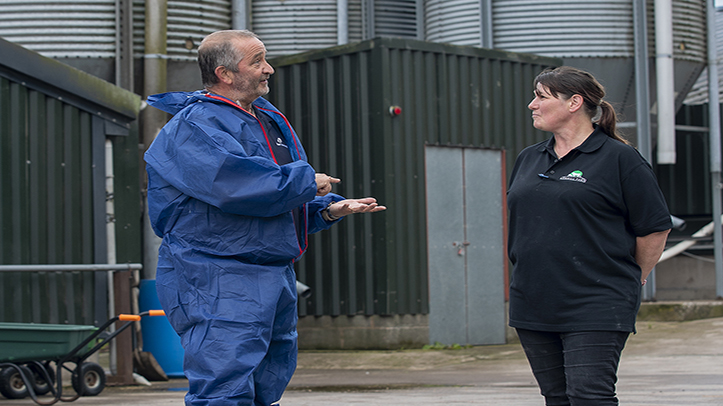A sharp rise in antibiotic use on Danish pig farms following the ban on zinc oxide (ZnO) in 2022 is highlighting the crucial role of on-farm management in maintaining piglet health, according to new research.
The study by the National Food Institute tracked antimicrobial use (AMU) across Danish pig units in the months after ZnO was withdrawn. It found that AMU in weaners increased by 17% on farms that had previously used ZnO, and even farms that hadn’t used ZnO saw a 19% rise – suggesting wider challenges linked to increased post-weaning diarrhoea and pathogen pressure.
The study covered between 45% and 70% of all Danish weaner pig farms annually, and up to 94% of finishing units. While some farms reported major issues with piglet health, others experienced little to no disruption – pointing to the importance of factors such as hygiene, housing, feeding, and weaning management.
Nigel Bennet, livestock area manager for Northern Europe at biosecurity and hygiene specialists Roam Technology, said the impact of the ZnO ban is now being felt across many parts of Europe, including the UK.
“Zinc oxide almost acted like a sticky plaster – masking deeper issues in piglet health. Now that it’s gone, underlying problems such as post-weaning diarrhoea (PWD) are surfacing, and they’re proving difficult to manage,” he explains.
“PWD doesn’t just affect piglet welfare – it has a knock-on effect on growth rates, feed efficiency, and ultimately the economics of pig production. What we’re finding is that controlling it now requires a much more holistic strategy. Hygiene is absolutely central to that – from farrowing accommodation right through to weaning accommodation.”
The research backs this up: farms that moved pigs between sites after weaning saw AMU in finishers increase by 29% on average. Where pigs were transferred between farms owned by different producers, antibiotic use in weaners rose by around 10%. The findings suggest that multi-site and fragmented production systems could be amplifying disease risks and treatment needs.
“This increase in AMU when pigs are moved is likely due to variations in biosecurity and hygiene standards between farms,” says Mr Bennet. “Some units will be operating tight all-in/all-out protocols, while others may not.
“That inconsistency allows disease to creep in—and that’s where proper cleaning, disinfection, and pathogen reduction become vital tools.”
Interestingly, the study also found that farms with larger numbers of weaners tended to have lower AMU – likely due to greater investment in structured production flows and biosecurity infrastructure.
National Danish surveillance data (DANMAP) supports the study’s findings, noting a rise in the use of aminoglycosides – especially neomycin and apramycin – to treat E. coli-related diarrhoea post-ZnO. With growing resistance to neomycin, the pressure to reduce antibiotic reliance is intensifying.
“The situation underscores the urgency of improving non-antibiotic disease control strategies,” added Mr Bennet.
He believes that the UK could see similar trends to those reported in the study. According to the Agriculture and Horticulture Development Board (AHDB), antibiotic use in UK pigs rose to 85 mg/PCU in 2023, up from 72 mg/PCU in 2022, though still lower than 2021 levels.
“We’re speaking to farmers every week who are battling PWD following the ban. There’s no single solution to help the situation – what’s needed is an integrated approach that spans nutrition, management, gut health and, critically, hygiene,” added Mr Bennet.


